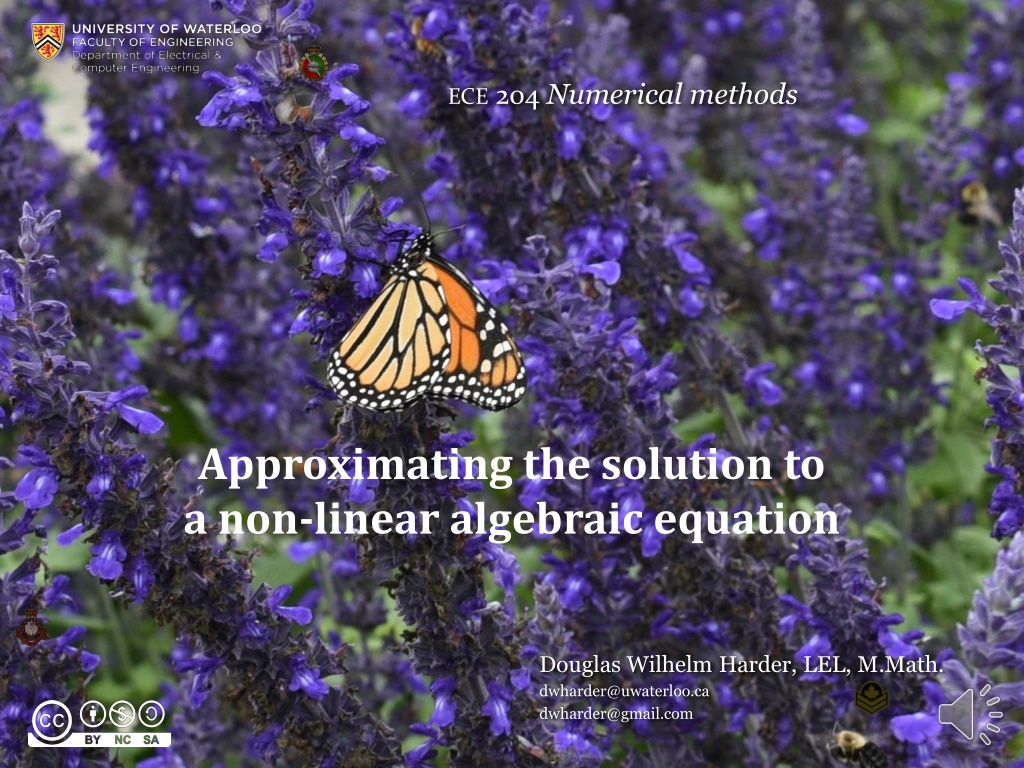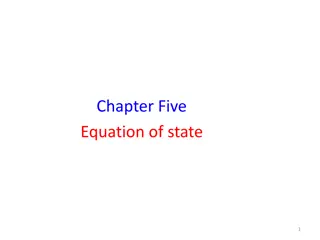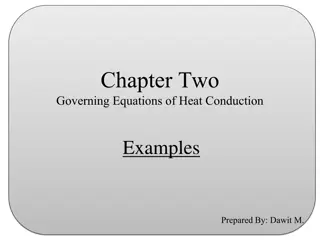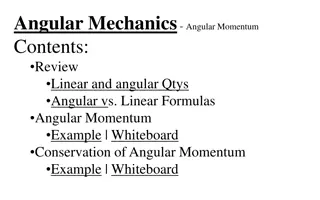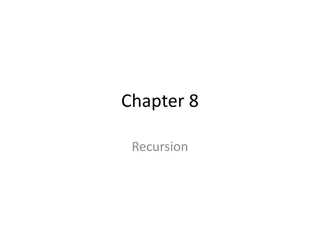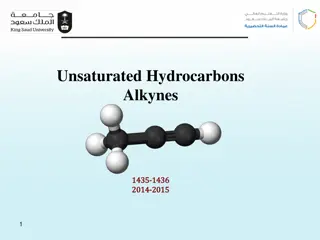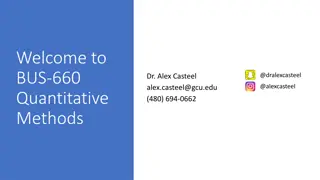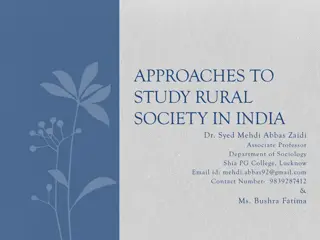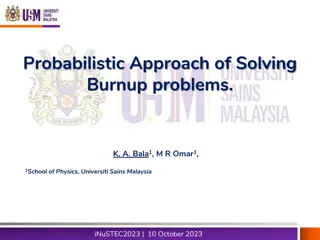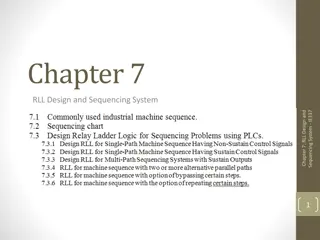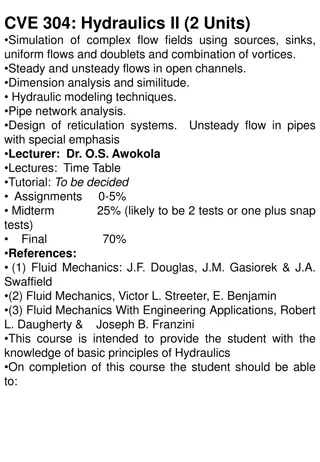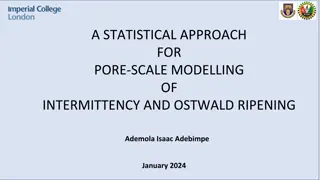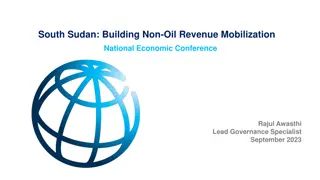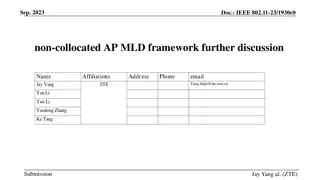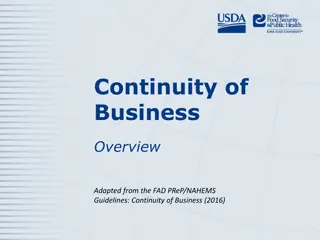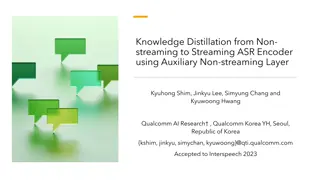Approaches for Approximating Non-Linear Equations
Techniques for approximating solutions to non-linear algebraic equations involve converting the problem into a root-finding one. Seven methods such as Newton's method, bisection method, and linear interpolation are utilized with specific halting conditions. Tangent and secant lines, as well as Taylor series approximations, play crucial roles in these numerical approaches.
Download Presentation
Please find below an Image/Link to download the presentation.
The content on the website is provided AS IS for your information and personal use only. It may not be sold, licensed, or shared on other websites without obtaining consent from the author. Download presentation by click this link. If you encounter any issues during the download, it is possible that the publisher has removed the file from their server.
Presentation Transcript
ECE 204 Numerical methods Approximating the solution to a non-linear algebraic equation Douglas Wilhelm Harder, LEL, M.Math. dwharder@uwaterloo.ca dwharder@gmail.com
Approximating the solution to a non-linear algebraic equation Introduction In this topic, we will Discuss converting finding a solution to a non-linear equation into a root-finding problem List the seven techniques we will use to find roots Discuss halting conditions Define both a tangent line and a secant line Describe The std::signbit function in C++ The sign function in MATLAB 2
Approximating the solution to a non-linear algebraic equation Approximating non-linear algebraic equations We continue by finding approximations to solutions to a non-linear equation We convert any non-linear equation to a root-finding problem f (x) = 0 We will use seven approaches: Newton s method Bisection method Bracketed secant method Bracketing and linear interpolation Secant method Linear interpolation Muller s method Quadratic interpolation Inverse quadratic interpolation Quadratic interpolation Brent-Dekker method 2nd, 3rd and 6th methods Taylor series Bracketing 3
Approximating the solution to a non-linear algebraic equation Approximating non-linear algebraic equations All these techniques will use iteration What are the halting conditions? We want to make sure we are likely close to a root |xn+1 xn| < estep We want to make sure it is a root and not a discontinuity |f(xn + 1)| < eabs 4
Approximating the solution to a non-linear algebraic equation Solutions to equations Reviewing definitions: A tangent line is a line that touches a curve at one point A secant line is one that intersects a curve at two points cot(q ) csc(q ) tan(q ) q sec(q ) 5
Approximating the solution to a non-linear algebraic equation Solutions to equations A first-order Taylor series approximation defines a tangent line to a point on a curve This assumes the function is differentiable at the point It may intersect the curve elsewhere, but at the point it is tangent A linear interpolating polynomial defines a secant line 6
Approximating the solution to a non-linear algebraic equation Equal or opposite signs? In C++, there is the std::signbit( double x ) function It is in the cmath library It returns the sign bit as a Boolean value If the sign bit is 1, the number is negative and true is returned Otherwise, the sign bit is 0, the number is positive, and false is returned We test if two variables x and y have the same sign with if ( std::signbit( x ) == std::signbit( y ) ) { // do something } 7
Approximating the solution to a non-linear algebraic equation Equal or opposite signs? In MATLAB, there is the sign( x ) function It returns: 0 if the argument is zero 1 if the argument is positive -1 if the argument is negative We test if two non-zero variables x and y have the same sign with if sign( x ) == sign( y ) % do something end 8
Approximating the solution to a non-linear algebraic equation Summary Following this topic, you now Understand we are looking at seven root-finding techniques Each uses different tools to find the root Each uses iteration Understand that we have two halting conditions, both of which must be satisfied Have reviewed the definitions of a tangent line and secant line Are aware of the std::signbit( ) function and the sign( ) 9
Approximating the solution to a non-linear algebraic equation References [1] https://en.wikipedia.org/wiki/Nonlinear_system 10
Approximating the solution to a non-linear algebraic equation Acknowledgments None so far. 11
Approximating the solution to a non-linear algebraic equation Colophon These slides were prepared using the Cambria typeface. Mathematical equations use Times New Roman, and source code is presented using Consolas. Mathematical equations are prepared in MathType by Design Science, Inc. Examples may be formulated and checked using Maple by Maplesoft, Inc. The photographs of flowers and a monarch butter appearing on the title slide and accenting the top of each other slide were taken at the Royal Botanical Gardens in October of 2017 by Douglas Wilhelm Harder. Please see https://www.rbg.ca/ for more information. 12
Approximating the solution to a non-linear algebraic equation Disclaimer These slides are provided for the ECE 204 Numerical methods course taught at the University of Waterloo. The material in it reflects the author s best judgment in light of the information available to them at the time of preparation. Any reliance on these course slides by any party for any other purpose are the responsibility of such parties. The authors accept no responsibility for damages, if any, suffered by any party as a result of decisions made or actions based on these course slides for any other purpose than that for which it was intended. 13
